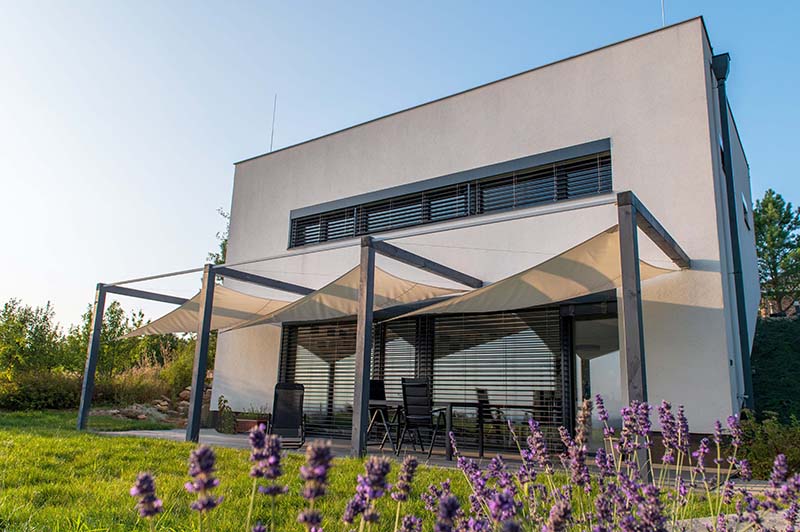
New build housing will need to meet the Scottish equivalent of the Passivhaus standard within two years. But is there enough understanding of the standard to ensure its correct implementation? Here, Allan Doris, branch manager at commercial roofing contractor BriggsAmasco, explains why Passivhaus design expectation needs to be more clearly defined.
There are plenty of positives to be taken from the Scottish Government’s introduction of Passivhaus legislation. It is claimed that constructing to the standard reduces a building’s heating demand by 90%, whilst the improved interior air temperature consistency enhances year-round occupant comfort and wellbeing. But do we have the necessary technology, tools, materials and understanding to deliver Passivhaus building tolerance levels requires? From my experience thus far, the answer to that question, is no.
Tolerance discrepancy
There are major obstacles to achieving construction tolerances being considered by Passivhaus consultants. For example, for a recent roofing project involving BriggsAmasco, the advocated machine-manufactured insulation had an either way 5mm tolerance. This was despite Passivhaus consultants stipulating a 1.5mm tolerance.
This is not an uncommon discrepancy. But rather than engaging with project stakeholders to devise a solution to counteract the 3mm tolerance shortfall, the burden of responsibility is handed to the main contractor. In the case of the project involving BriggsAmasco, Passivhaus consultants floated the idea of craft trade tools being used as part of an onsite cutting process to achieve the 1.5mm tolerance, but with the best will in the world, that just wasn’t possible.
As stated, there are many reasons to welcome the coming of new-build Passivhaus compliance but currently, the technology, tools and equipment are not available to make it happen. Therefore, I believe the time is ripe to create an open forum for building stakeholders to convince Passivhaus consultants of the need for greater consideration in respect of building material manufacturing tolerances. This is also important to debating whether craft trade tools regularly used onsite are capable of meeting the standards described or set out by the Passivhaus Institute.
Collaboration
In my opinion, the only way to Passivhaus success is through extremely close collaboration between all parties from the early project stages. Although the Passivhaus standards are well written and informative, more focus is required on the practicality of meeting them on site. When additional products are required such as expanding foams – to fill gaps between insulation boards – the standards contain a lack of approved products and solutions that have been tested in Passivhaus applications for longevity and durability.
Facing challenges
As a proactive contractor, we are looking at trialling different materials to support the Passivhaus project requiring 1.5mm tolerances. But such research is time consuming and costly, involving materials that our installers may not be familiar with.
As a BriggsAmasco branch manager, I like to be aware of the technical challenges my site teams are likely to face. But in order to develop solutions to meet Passivhaus compliance, contractors such as ourselves are sailing into unchartered territory.
Again, the issue would not be as acute if Passivhaus consultants, aware of the tight tolerances we were having to work with, supported us by highlighting a range of materials and ancillary products that could help achieve compliance. However, the onus remains with the specialist contractor.
Demonstrating concerns
In terms of additional proactive measures taken to highlight our concerns regarding building tolerance compliance, in August we invited Passivhaus Trust representatives to a demonstration day. It was held at a BriggsAmsaco site and involved our technical teams creating a built-up roofing system within a controlled warehouse environment.
Despite there being no exposure to external elements, foot traffic or building movements, we were unable to achieve 1.5mm tolerance compliance.
A representative from a leading roofing membrane manufacturer was also in attendance. We have supplied Passivhaus consultants with our optimal tolerance outcomes.
Realistic ambitions
Until technology progresses to significantly improve onsite cutting efficiencies, I believe consultants must be more realistic with their desired outcomes for Passivhaus compliance. Many variables provide a barrier to even the most skilled operators achieving 1.5mm tolerances: human error, manufacturing tolerances, materials being damaged en route to a roof. Hence, the level of cross-party cooperation and product evolution is yet to keep pace with Passivhaus ambitions.
The challenge now for building stakeholders is to make Passivhaus compliance achievable, regardless of how tight the required tolerances. It’s why I’m imploring all interested parties, from designers, manufacturers and contractors, through to structural engineers and Passivhaus consultants to bring their thoughts, ideas and concerns to the table so Scotland’s airtight, energy-efficient homes can be built with confidence.








